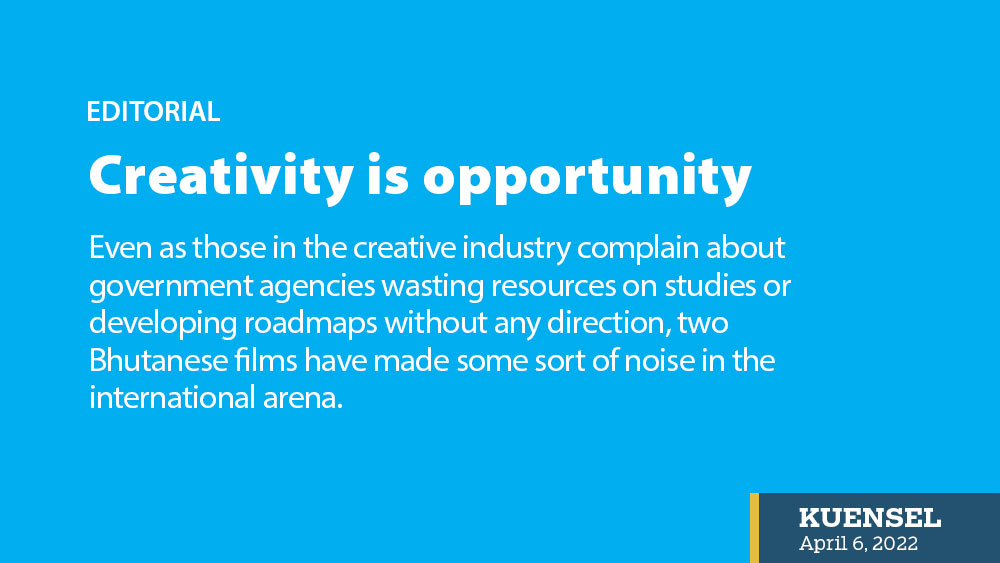Even as those in the creative industry complain about government agencies wasting resources on studies or developing roadmaps without any direction, two Bhutanese films have made some sort of noise in the international arena.
Following Pawo Choyning Dorji’s Oscar nomination for “Lunana—A Yak in the Classroom”, Charmi Chheda’s “Gangnam Girls”, produced by Samuh, will feature at the UK Asian Film Festival later next month.
The recent events, at least in the film industry, are encouraging if not creating a small creative revolution on their own.
There will not be many films or documentaries that will make it to the Oscars but the Bhutanese audience is seeing a sea change in the film industry. Apart from the cheap thrills particularly created for the masses, the change in the entertainment and infotainment industry is encouraging. This should be welcomed. Many more short films in the past made to renowned regional and international festivals, a sign of recognition of our talent.
We are already experiencing a growth in the creative industry, films, music, advertising, handicrafts, and fashion. And most of it, or all, are without the support of the government or agencies. For example, some Bhutanese who are good at creativity and know how to leverage information and communication technology are already making a living from social media platforms like YouTube. What we have learnt is that the world is the audience if we can produce quality content.
What is lacking, like in all sectors, is the fund, called budget in our context, to hone the skills or let creativity thrive. Bhutan’s strength is in our culture. If we can look at our culture as a creative industry the potentials are vast. “The Yak in the Classroom” depicts our unique culture besides many aspects. If we want the creative industry to diversify the economy, create employment, and generate income, we need to recognise and support the industry. As we talk about blending the traditional notion of culture and the modern notion of creating a culture-based economy, we need to look at culture as a creative industry.
There are opportunities. For example, the Bay of Bengal Initiative for Multi-sectoral Technical And Economic Cooperation (BIMSTEC) recognised the creative industry as the industry of imagination. Not many, including us, couldn’t reap benefits from the concept that looks at content, knowledge innovation, and creativity as industries of the future.
Studies and surveys are important as we need data and research to make decisions. What is also available is the almost unlimited potential in collaborating in these industries as a regional effort, taking advantage of the dynamism that already exists in these areas.


